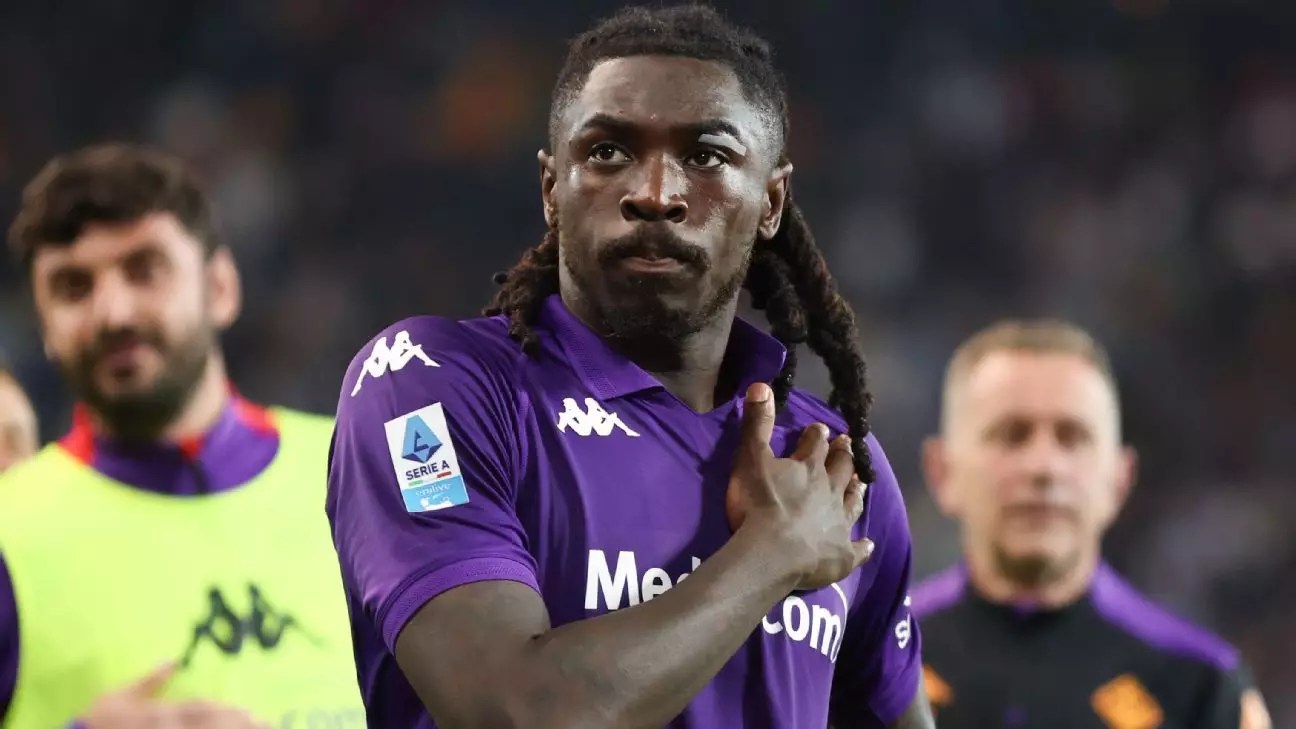The summer transfer window is once again stirring a whirlwind of excitement, anxiety, and strategic maneuvering across Europe’s top football leagues, with Premier League giants Manchester United and Liverpool at the heart of the action. However, the flurry of negotiations and target re-evaluations reveal more about the challenges facing these clubs than completely clarified plans. This transfer period spotlights the increasing complexity and urgency for clubs to secure their ambitions while managing financial prudence and future planning.
Manchester United’s Tightrope Walk: Mbeumo, Kean, and the Pressure to Decide
Manchester United’s pursuit of attacking reinforcements highlights a critical juncture in their summer strategy. Bryan Mbeumo of Brentford has emerged as a clear priority, but with the club reportedly turning down a substantial £62.5 million offer, United’s quest looks fraught with difficulty. The inability to close this deal quickly forces United to keep a backup option ready: Moise Kean, currently at Fiorentina. Kean’s situation encapsulates the need for agility; Fiorentina’s £44 million release clause is time-sensitive, expiring on July 15, imposing a strict deadline that United must respect.
This duality in targeting signals a broader problem: United’s lack of a streamlined and decisive approach. The priority target’s club holding firm on valuation, combined with a ticking clock on their alternative, presents a precarious position. From a critical standpoint, if United hesitates, they risk losing both players—demonstrating how chasing ‘Plan B’ options may be as much about desperation as it is about strategy. The club must display decisiveness, or it could undermine the momentum needed to rebuild their attacking options effectively.
Liverpool’s Tactical Swap: Pragmatism Over Price Tags
At Liverpool, the scenario plays out with a touch of pragmatism showing through in their contemplation of a ‘make-weight’ player in negotiations. Instead of outright purchase, Liverpool are reportedly considering involving winger Ben Doak in a swap deal for Crystal Palace defender Marc Guéhi, whose valuation stands at approximately £50 million. Liverpool’s reluctance to meet this fee outright, combined with Palace’s apparent interest in Doak, reflects a shift in transfer dynamics—negotiations are less often pure cash transactions and increasingly tactical exchanges.
This move suggests Liverpool is seeking creative solutions within a congested market where prices are inflated. It also raises questions about Doak’s trajectory: Liverpool appears willing to part with a player who spent last season gaining experience elsewhere, indicating confidence in their extended squad depth or a judgment that Doak’s development may be better served away from Anfield.
Meanwhile, Liverpool is also on the verge of allowing defender Jarell Quansah to join Bayer Leverkusen. These decisions demonstrate the delicate balancing act between retooling a squad, maintaining depth, and managing budgets in a highly competitive environment.
Outside the Premier League: Strategic Signings and Contract Battles
Elsewhere, the football world continues its reshuffling with some compelling narratives. Besiktas’ imminent signing of Tammy Abraham from Roma—after his productive loan spell at AC Milan—provides a reminder that many talented players are active in moving to leagues where they can reignite their careers. Abraham’s transfer, valued at around €20 million, is a cost-efficient coup for a striker with Premier League credentials.
Over in England, Arsenal’s contract saga with Thomas Partey adds another layer of insight into player retention challenges. Partey’s reluctance to hastily commit to a renewal at the Emirates showcases how players are gaining leverage by holding out for better conditions or exploring their options freely. Arsenal’s anticipated replacement with Brentford’s Christian Nørgaard reflects how clubs must constantly anticipate departures and plan for seamless succession without destabilizing their midfield core.
West Ham’s pursuit of Borussia Mönchengladbach’s young German midfielder Rocco Reitz, despite his recent contract extension, illustrates how the presence of release clauses can significantly influence transfer possibilities. The reported €20 million clause not only sets a defined price but also triggers competition from Brighton and Fulham, underlining how contractual nuances shape player mobility.
Finally, Neom SC’s agreement with Nice over goalkeeper Marcin Bulka, beating Sunderland’s late interest, is a reminder that ambitious clubs outside the traditional powerhouses are aggressively stepping into the market, signaling the globalization and diversification of attractive destinations for players.
The New Transfer Reality: Deadlines, Deals, and Diplomatic Negotiations
This summer’s transfer activity reveals a landscape increasingly dominated by deadlines, player valuations, and negotiation creativity. Clubs no longer merely throw money at wishlist players but juggle make-weight players, looming release clauses, and strategic timing to outmaneuver rivals. While Manchester United and Liverpool’s differing approaches highlight contrasting philosophies—urgency versus tactical negotiation—both illustrate the high stakes and constant recalibration inherent to modern transfer dealings.
Critically, football clubs need to move beyond reactive strategies. Efficient scouting, early identification of targets, and robust contingency plans are essential to prevent last-minute scrambles that risk suboptimal deals or missed opportunities. The current transfer window is not only about talent acquisition but also about mastering negotiation acumen and market timing—a true test of club management under pressure.


Leave a Reply